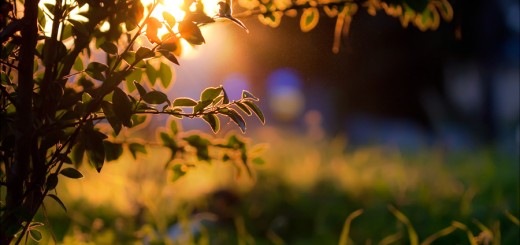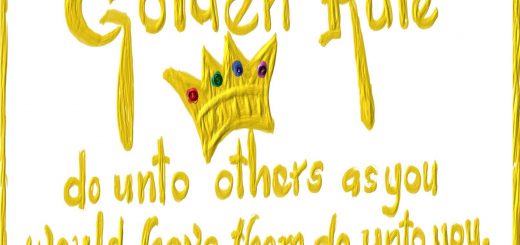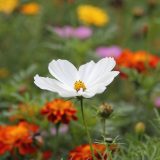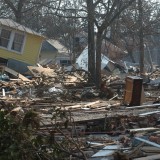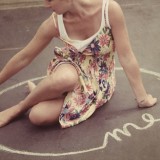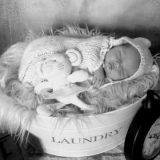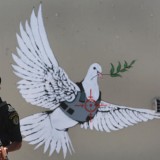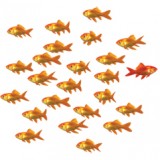Finding your way to let it all out
Each chapter in the Book of Lamentations is a poem. It is not a factual account of how Jerusalem was invaded and destroyed and its people carried off into exile. There are no facts and figures, no dates or analysis. What is called for here is poetry.
In the first poem, Jerusalem is described as a woman – a widow, a slave, a mother. How can a city be any of these things? Of course, it cannot. But sometimes words are not enough on their own. Sometimes we need images to convey the depth of emotion that is going on under the surface. The trauma and suffering behind the news report.
Rob Bell talks about this in Learning to Lament Part 2, his second Robcast on the Book of Lamentations. How suffering is not an intellectual exercise. The words to describe the facts are there – exact time of death, cause, location, plans for the funeral, but expressing how it feels to lose your father, well that is something else entirely. Carrying that immense grief with you is so exhausting in itself that finding the right words may seem impossibly hard. And it’s confusing – the emotions are all jumbled and messed up and you have no idea how to make sense of them. Literal language often fails you.
So then you turn to poetry. Images. Over the top language that doesn’t make sense literally and yet conveys what you need to express.
I feel like a part of me has died and been ripped out of my chest. There’s a gaping hole. I’m numb inside. I’m looking on from the outside. This isn’t me. This can’t be me. It’s like a dream. I’m watching it on TV. I’m like the walking dead. Going through the motions. I’m standing on the edge of an enormous pit looking down at the enormity of what has happened and if I acknowledge what has happened, I’ll fall in, down and down and down, and never find my way out again. I am now an orphan. I’m one of those chicks that’s fallen out of the nest onto the ground below. Alone. No one will be interested in me any more. I am not tied to anyone any more. I’m a tiny boat on a rough sea with no rope tying it to the harbour. I am adrift.
Other cultures and societies and communities have established ways to express their lamentations. There are rituals and traditions, set language, ways that work. We have mostly lost that, haven’t we? We have no idea what to do with our grief any more. We have lost the ability to find expression for how we are feeling. So we repress our feelings, push them down, get on with life, because we don’t know what else to do.
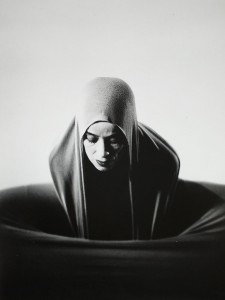 In an interview with Martha Graham about her new work ‘Lamentation’, the dancer describes a performance in Brooklyn, one of the first performances of the piece. Afterwards, a woman comes up to her and says ‘You will never know what you have done for me tonight, thank you.’ Afterwards, Martha found out that this woman had witnessed her nine year old son being hit by a truck and killed right before her eyes. She had never been able to cry before. On this day, watching this dance about ‘the tragedy that obsesses the body’, she discovered that she was not ashamed to cry any more. She had found release. Martha dances within a tube of fabric that encases the whole body – dancing within it is like stretching inside your own skin. This is what that woman saw that night. She caught a glimpse of the truth that grief is honourable and grief is universal.
In an interview with Martha Graham about her new work ‘Lamentation’, the dancer describes a performance in Brooklyn, one of the first performances of the piece. Afterwards, a woman comes up to her and says ‘You will never know what you have done for me tonight, thank you.’ Afterwards, Martha found out that this woman had witnessed her nine year old son being hit by a truck and killed right before her eyes. She had never been able to cry before. On this day, watching this dance about ‘the tragedy that obsesses the body’, she discovered that she was not ashamed to cry any more. She had found release. Martha dances within a tube of fabric that encases the whole body – dancing within it is like stretching inside your own skin. This is what that woman saw that night. She caught a glimpse of the truth that grief is honourable and grief is universal.
In 1930, Graham premiered a haunting solo dance of mourning called Lamentation. She sat on a low bench, wearing a tube-like shroud with only her face, hands and bare feet showing. In the dance, she began to rock with anguish from side to side, plunging her hands deep into the stretchy fabric, writhing and twisting as if trying to break out of her own skin. She was a figure of unbearable sorrow and grief. She did not dance about grief, but sought to be the very embodiment of grief. Nancy Duarte
That is what I am discovering for myself in the Martha Graham Technique. I am finding a way to express my own depth of emotion. A way that does not require words. I attended class on Tuesday with the weight of the world on my shoulders and left feeling lighter. Through the breath and intensity of movement, I could release the pain and anxiety and confusion I was feeling. The contraction that is key to the Technique for me is like being punched in the pit of the stomach and that is what had happened on an emotional level hours earlier when the optician told me there might be something wrong with my precious boy. But after the contraction comes the release. Physically over and over again throughout the class until it releases something on an emotional level too. My heart slowly rose up towards the heavens.
Dance is quite possibly not your thing. But find your thing, I urge you. Maybe it is singing that taps into your deepest emotions and gives them expression. Or listening to music. Or playing an instrument. Music is an extremely powerful expression. As is art. Have you noticed the art work I’ve been using as my images in this series? I googled Lament in Images and there is page after page of artwork on this subject.
Maybe your thing is running or kick boxing or gardening or poetry or walking on the beach, I have no idea. But finding a way to express what is inside each one of us is crucial for our health on every level – emotional, spiritual and physical.
Lamentations is not about chasing the facts, not about analysis, not about finding out why.
Lamentations is a deep sigh that exhales ‘How?’ How did it come to this? How do I express this? How do I deal with this?
